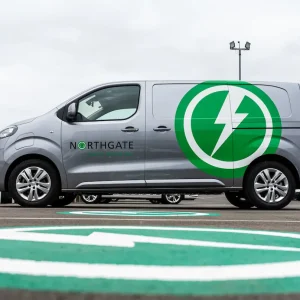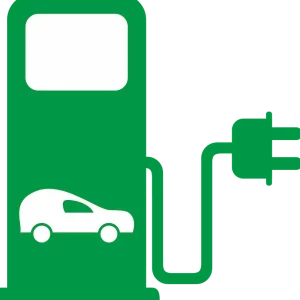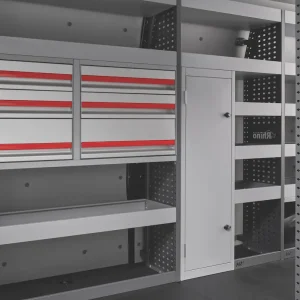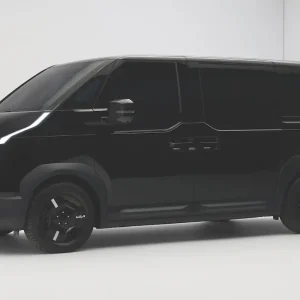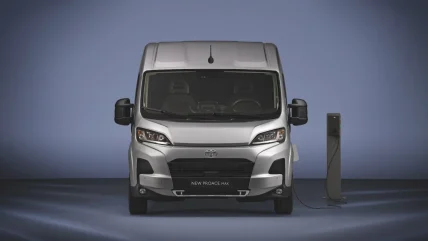
Last year we saw Toyota announce its intentions to divert hydrogen energy away from passenger cars and into commercial vehicles.
This was followed up with details of a hydrogen-powered pick-up trial being led by Toyota GB. Yet Toyota isn’t abandoning other powertrains, far from it, as it has now completed its LCV range with the addition of the Proace Max large van to its line-up. Now with full coverage of ICE and BEV versions, Toyota not only has a full range of panel vans with combustion and zero-emission options but arguably also possesses the most complete line-up of any LCV manufacturer when you add the Corolla Commercial and Land Cruiser Commercial, not to mention Hilux, into the mix.
Didier Gambart, president of KINTO Europe, Toyota’s ride sharing business, who was vice president of Toyota Europe at the time of our meeting, explained that Toyota sees itself as a hydrogen pioneer in much the same way as it championed hybrids with the Prius.
“We see the future of hydrogen for the LCV,” he told What Van? at the annual Kenshiki Forum. “When it comes to hydrogen, it would be strange [if] Toyota [did] not take a leading role considering our pioneering position. We don’t see the future without an H2 solution. How, and with whom, is something that we cannot disclose because we are in the thinking and discussion process, but for sure the hydrogen solution would make a lot of sense in terms of payload and in terms of towing capacity.”
Gambart also points out that hydrogen meets the needs of rapid refuelling and range that EVs have yet to establish their credentials in. The Hilux H2 pilot is an example of an obvious use-case by a customer in the UK that has a hydrogen refuelling infrastructure and a desire to decarbonise its commercial vehicles, without compromising on their use. Gambart insists there’s more to come from the trial and that “production at scale” of the hydrogen Hilux is hopefully where the project ends up. However, he is quick to reassert that the development of such products also requires support.
“We need a [market] by market approach,” he says, explaining that hydrogen products will eventually be available to countries that have developed their infrastructure. “We know that [French President Emmanuel] Macron, wants to develop hydrogen, and they put a lot of resources [into] that. There are also two domestic players that are very much interested; Stellantis and Renault are developing their own hydrogen technology. So, we can assume that France should become a more mature market in the near future when it comes to the hydrogen infrastructure. That’s why it’s a ‘by market approach’ and this is something we are following very closely.”
He adds: “The golden question remains the development of the infrastructure, and that, of course, we don’t control on our own. We see some competitors moving into that direction as well, so there is recognition from all OEMs that hydrogen should be a suitable powertrain and technology for the future,” Gambart explains.

His reference to competitors is an interesting one as he is referring to Stellantis’ own activity in the mid-sized van segment with a hydrogen-powered Vauxhall Vivaro. It comes as no coincidence that Gambart identifies the Stellantis brands as the competition, given Toyota’s own reliance on its products for its LCV range. Toyota plans to increase its share of the van market and sees the Stellantis models as the most obvious competition. However, for hydrogen power it’s not clear if Toyota would be looking to venture alone in the market and points back to its current relationship with Stellantis on its LCV range as an example of where the combined strength of partnerships helps everyone.
“In a hydrogen future, a hydrogen LCV would perfectly make sense, but the reason that made us convinced that we should go with this [Stellantis] partnership is the scale. We have to reach a very difficult [number of sales] to break even or to be profitable in Europe. If you don’t reach a 100,000 [unit] threshold, excluding Hilux, which accounts for roughly 50,000 to 60,000, if you don’t partner with somebody that has the possibility to bring the volume at scale, it’s very difficult to have a profitable business case in Europe. That’s why from a Toyota Group perspective, LCV is something important and something we’re working on. So far in Europe, to reach a sustainable business model, we have to partner with local competitors.”
In 2023, Toyota reached a new record of more than 140,000 units for its LCV range but has ambitions to exceed 180,000 sales by 2025.
That means a market share of 7% and a position in the top six players in the market. To achieve this, Toyota will have to take market share from its partners. To do this, it plans to
offer a more focused LCV service, with dedicated sites for certain countries like Poland where market share is high. The addition of the Proace Max will now also enable it to pitch for fleet tenders previously unavailable, as it is now capable of providing a full range.
“We have been growing fast over the last year, so it’s not just an ambition. It’s the result of growing – our LCV market share has been growing in all the markets. The LCV offer of the past was made of Hiace and Hilux, since we introduced Proace and Proace City, we started to have a more compelling and complete LCV offer. We are building Toyota Professional dedicated outlets, outside of the main commercial zones. We will go more towards industrial zones to make sure they are convenient for customers, with parking and so on. We can be more competitive, cheaper, and offer more convenience,” Gambart says.
Growth is forecast to come from across the whole of Europe, but Gambart believes some countries will be more successful than others. Those that already have a strong affinity for Toyota LCVs will also be the ones to get the dedicated LCV centres.
“Faster traction will be in all the markets where Toyota already has a strong market share. As an example, in Toyota Central Europe, where our passenger car market share is already in a range of 18%, we are targeting above 20% market share in LCV markets. The secondary region where we observe the same is in the Nordics market.
“Historically the passenger car market is above 10%, but as an example in Norway it’s above 20% market share. These are two solid foundations. Now, the challenge comes more from the western countries of France, Italy, Spain, UK and Germany.”
Toyota already has 57 dealers covering LCVs in the UK, but despite a growing presence and several impressive fleet deals, the UK is unlikely to be one of the countries to get a roll out of dedicated LCV centres. As for hydrogen, despite trials in the UK, it will inevitably depend upon infrastructure, but sales will only come if Toyota and its rivals, including Renault and Stellantis, can create an offering as compelling as their current full range of diesel and EVs.
Fuel for thought
Toyota has already tried hydrogen in passenger cars with the Mirai, and after a decade of trying to find a place for it – the first generation Mirai was introduced in 2014 and the most recent model, which the Hilux is based on, was launched in 2021 – it’s finally pulled the plug.
Hardly surprising given that at the end of 2023 just 40 countries had hydrogen filling stations and only South Korea (174) and metropolitan areas of Japan (166) could be considered to have anything close to a comprehensive and useable network. Resistance is coming from all angles, with a lack of infrastructure, consumer apathy and even from other OEMs.
During the course of speaking with Toyota’s Didier Gambart he made an observation: “If you listen to most of the market and to the customer, there is zero interest for hydrogen. If we provide even more cheap diesel, [customers] will be happy to keep driving diesel LCVs for the next decade.”
I don’t think he’s wrong, and diesel will certainly play a very important role over the next decade, but it’s the issue of pricing that really struck a chord. Hydrogen isn’t cheap to make – even if it’s green hydrogen from renewables – and due to its mass consumption diesel remains a cost-effective fuel. One of these factors will have to change. We make hydrogen cheaper or we tax diesel out of existence. Without that, in the next decade Toyota may well be giving up on hydrogen LCVs as well.
George Barrow is the UK jury member for the International Van of the Year Award.

